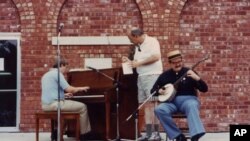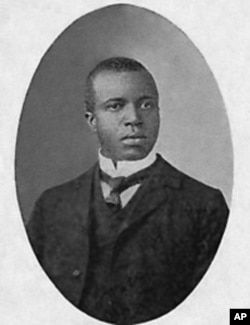Here’s one of those word-association games. If we said “waltz,” you’d probably think of Vienna, Austria.
Closer to our home, if we said “Dixieland,” New Orleans, Louisiana, would likely rush to mind.
Country music? Nashville, Tennessee. Blues? Memphis, also in Tennessee.
The soul sound of Motown? The Motor City, of course - Detroit, Michigan. Folk? San Francisco or New York City’s Greenwich Village.
Now here’s a tougher one: How about ragtime?
Ragtime was born, and is still king, in a little town that even many Americans have never heard of.
It’s Sedalia, in the Midwest state of Missouri.
Sedalia is a factory town of about 21,000 people. But a century ago, huge cattle drives from Texas passed through on their way north, and two cross-country railroads had big engine shops there.
And all those cowboys and railroad workers frequented saloons and brothels. That meant lots of jobs for piano and banjo players.
Into this scene came Scott Joplin, who played piano in some of those lively establishments. And to keep his intoxicated audience interested, he developed a herky-jerky style of music called ragtime.
It really caught on, in part because it was ideally suited for piano rolls, which were then wildly popular. As these rolls of heavy paper punched with holes slowly turned within so-called “player pianos,” they activated the keys and produced tinkly music all by themselves.
That’s the short version of the story about ragtime, Scott Joplin, and Sedalia, Missouri. By the way, piano rolls are now historic artifacts. The final ones were made last year, in Buffalo, New York.










